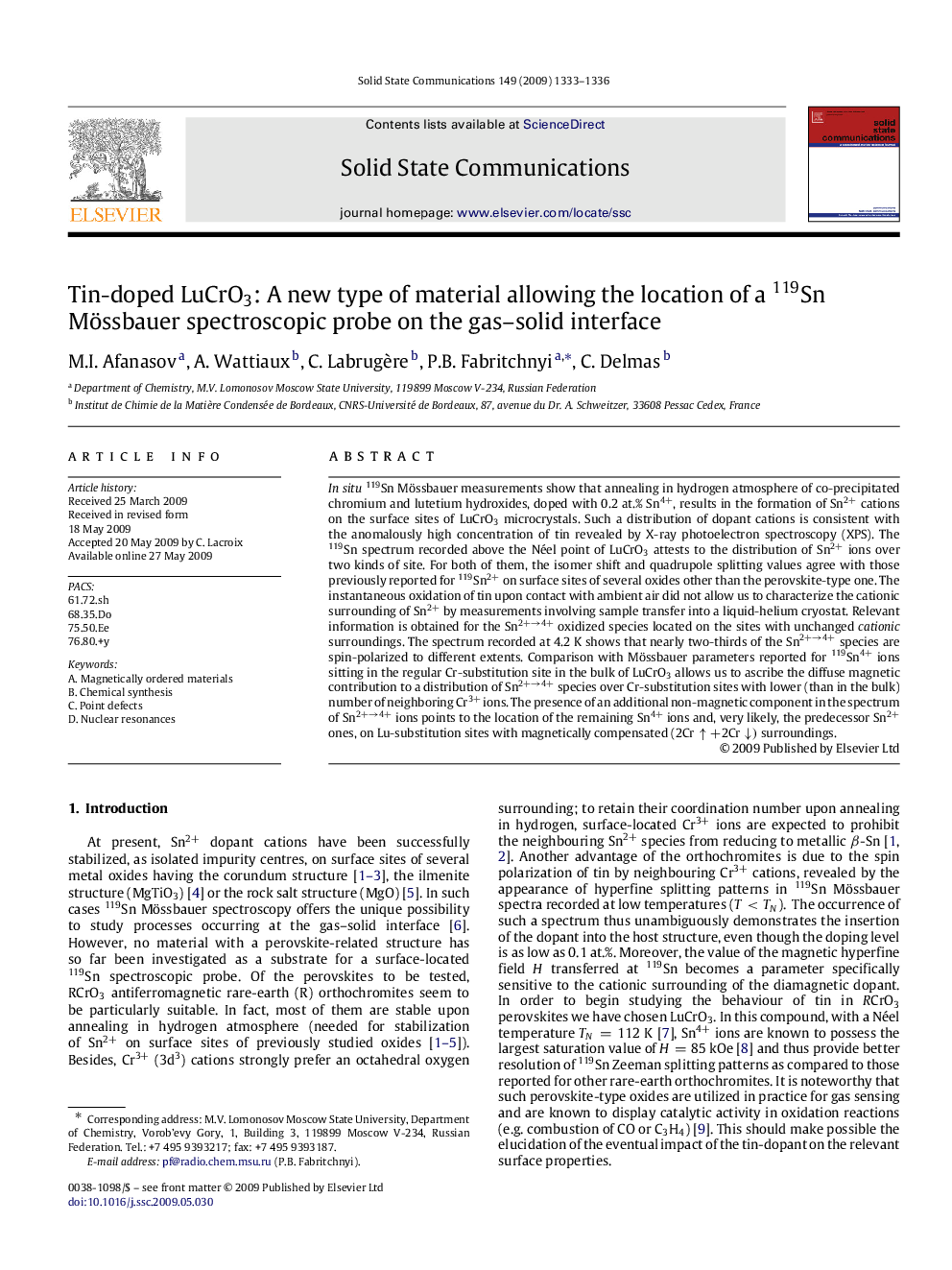| Article ID | Journal | Published Year | Pages | File Type |
|---|---|---|---|---|
| 1594740 | Solid State Communications | 2009 | 4 Pages |
Abstract
In situ 119Sn Mössbauer measurements show that annealing in hydrogen atmosphere of co-precipitated chromium and lutetium hydroxides, doped with 0.2 at.% Sn4+, results in the formation of Sn2+ cations on the surface sites of LuCrO3 microcrystals. Such a distribution of dopant cations is consistent with the anomalously high concentration of tin revealed by X-ray photoelectron spectroscopy (XPS). The 119Sn spectrum recorded above the Néel point of LuCrO3 attests to the distribution of Sn2+ ions over two kinds of site. For both of them, the isomer shift and quadrupole splitting values agree with those previously reported for 119Sn2+ on surface sites of several oxides other than the perovskite-type one. The instantaneous oxidation of tin upon contact with ambient air did not allow us to characterize the cationic surrounding of Sn2+ by measurements involving sample transfer into a liquid-helium cryostat. Relevant information is obtained for the Sn2+â4+ oxidized species located on the sites with unchanged cationic surroundings. The spectrum recorded at 4.2 K shows that nearly two-thirds of the Sn2+â4+ species are spin-polarized to different extents. Comparison with Mössbauer parameters reported for 119Sn4+ ions sitting in the regular Cr-substitution site in the bulk of LuCrO3 allows us to ascribe the diffuse magnetic contribution to a distribution of Sn2+â4+ species over Cr-substitution sites with lower (than in the bulk) number of neighboring Cr3+ ions. The presence of an additional non-magnetic component in the spectrum of Sn2+â4+ ions points to the location of the remaining Sn4+ ions and, very likely, the predecessor Sn2+ ones, on Lu-substitution sites with magnetically compensated (2Crâ+2Crâ) surroundings.
Keywords
Related Topics
Physical Sciences and Engineering
Materials Science
Materials Science (General)
Authors
M.I. Afanasov, A. Wattiaux, C. Labrugère, P.B. Fabritchnyi, C. Delmas,
